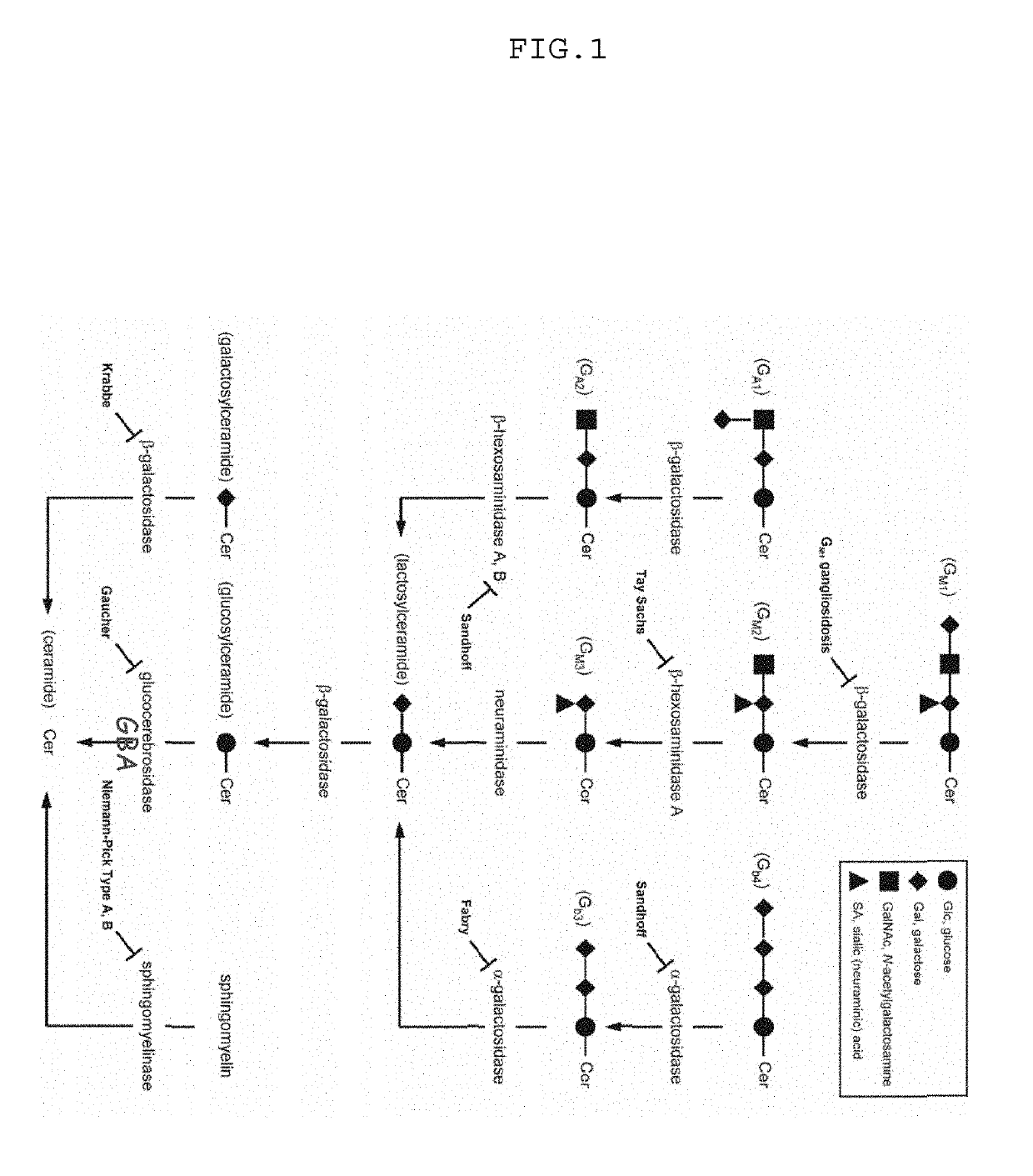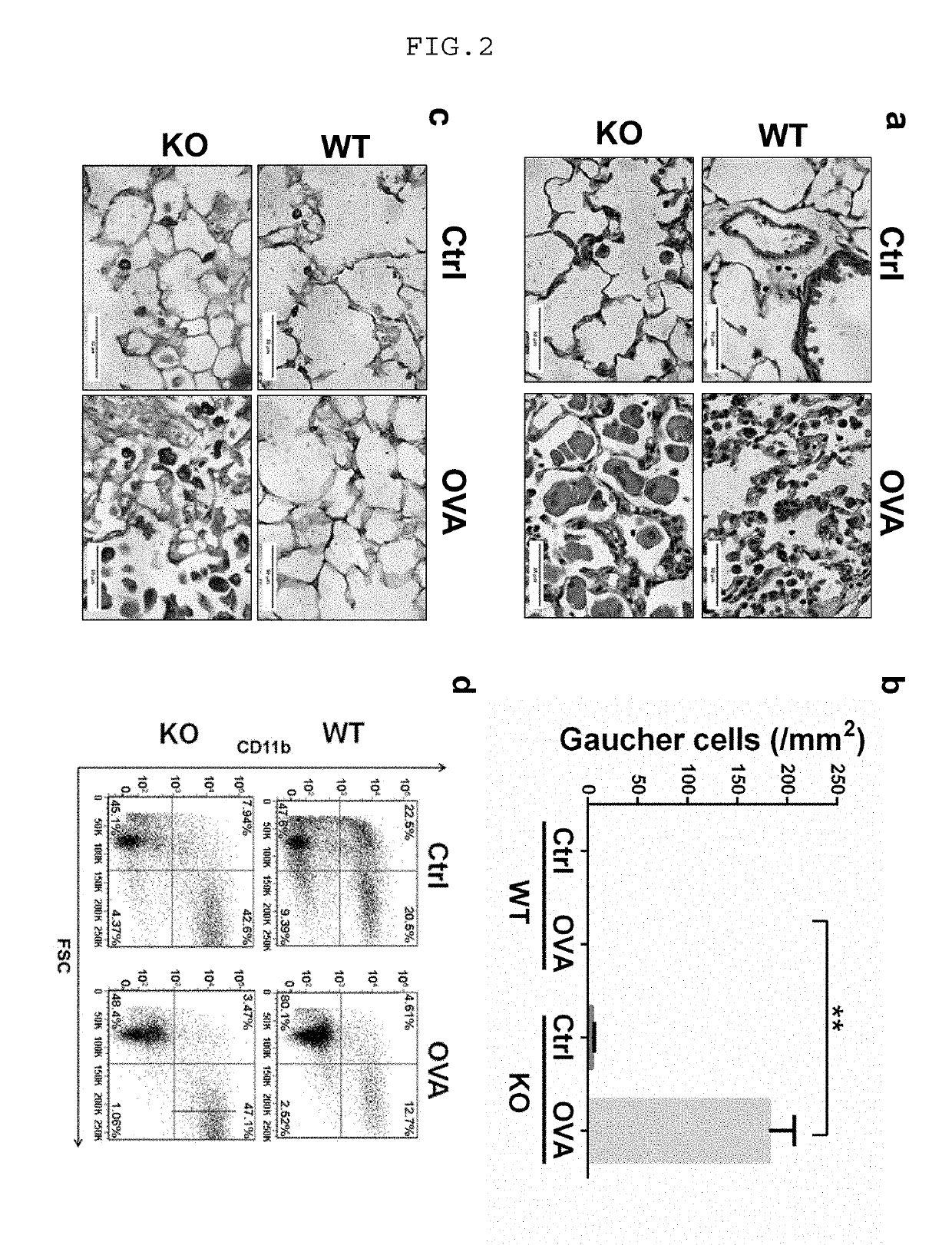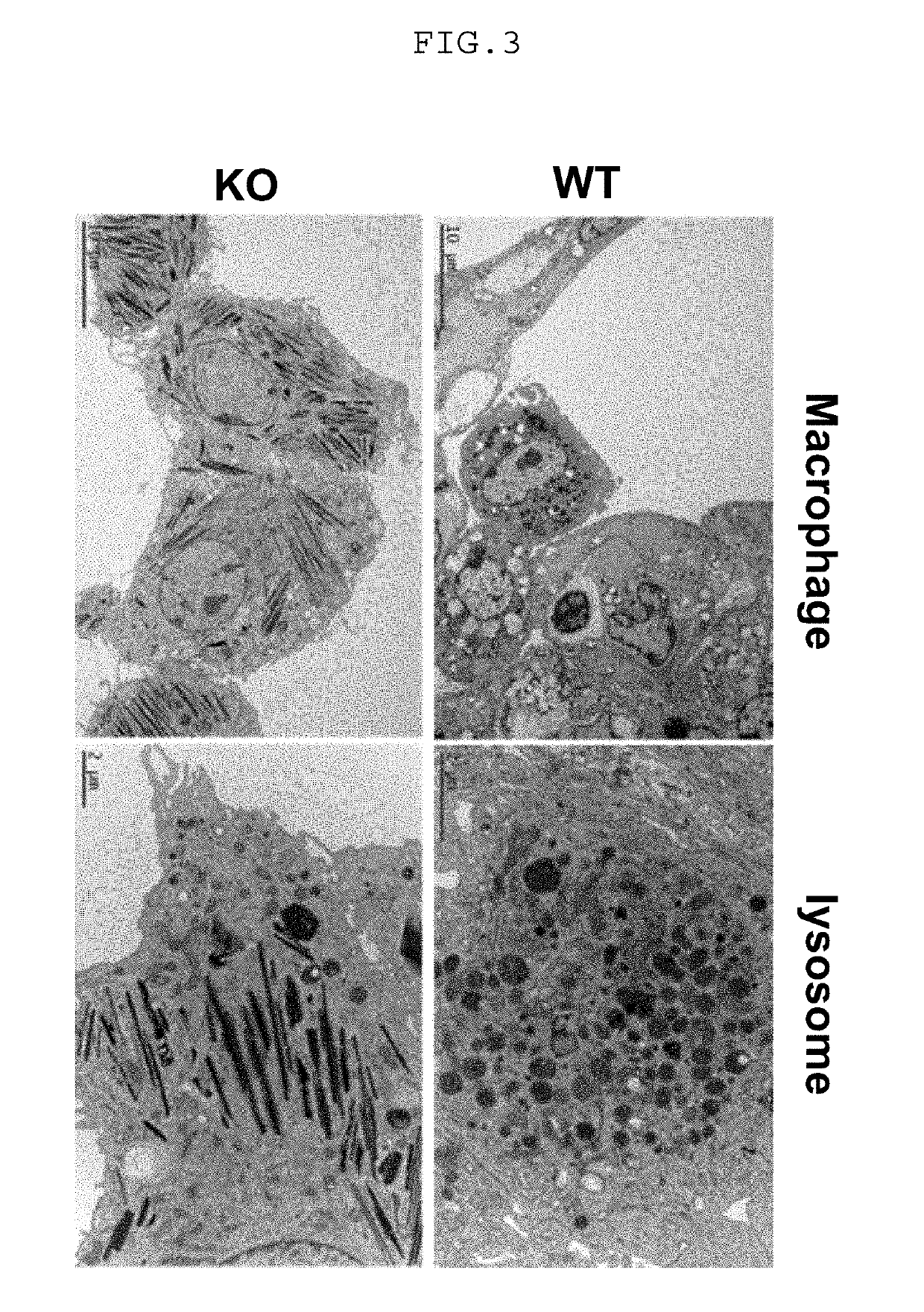Progranulin (PGRN) and its derivatives for diagnosis and treatment of lysosomal storage diseases
a technology of progranulin and lysosomal storage, which is applied in the direction of peptide sources, instruments, metabolism disorders, etc., can solve the problems of connective tissue and ocular pathology, central nervous system dysfunction, and enlarged liver and spleen
- Summary
- Abstract
- Description
- Claims
- Application Information
AI Technical Summary
Benefits of technology
Problems solved by technology
Method used
Image
Examples
example 1
Progranulin is Required for the Lysosomal Delivery of β-Glucocerebrosidase and its Deficiency Causes Gaucher Disease
[0181]Glycosphingolipid metabolism is a process mediated by multiple enzymes. Insufficiency of a metabolic enzyme causes accumulation of its corresponding substrate in the lysosome. Pathways for glycosphingolipid metabolism implicated in lysosome storage diseases (LSD) are depicted in FIG. 1. Gaucher's disease, the most common LSD, is caused by mutation of glucocerebrosidase (GBA), which metabolizes β-glucosylceramide to ceramide, as shown in FIG. 1. Mutation of GBA leads to the accumulation of the GBA substrate, β-glucosylceramide (β-GlcCer), in macrophages.
[0182]Gaucher disease (GD), the most common lysosomal storage disease, is typically caused by inherited deficiency of glucocerebrosidase (GBA). Herein we report that deficiency of progranulin (PGRN), a growth factor with a unique structure and multiple functions, also causes Gaucher-like disease unexpectedly. Both ...
example 2
PGRN Derivative Peptide Atsttrin
[0329]PGRN peptides, particularly including the PGRN derivative peptide denoted Atsttrin, have been evaluated and identified as having overlapping PGRN activity and, in some instances enhanced activity versus wild-type or full length PGRN. The PGRN derivative peptide Atsttrin is active as a modulator of TNF / TNFR activity and signaling, inhibiting or blocking TNF-mediated signaling or response, including TNF-α-induced inflammatory arthritis (Tang W et al (2011) Science 332:478-484; WO 2010120374). Atsttrin is a PGRN-derived engineered protein (Antagonist of TNF / TNFR Signaling via Targeting TNF Receptors), comprising combinations of half units of PGRN units A, C and F in combination with linker units P3, P4 and P5 (U.S. Pat. No. 8,362,218; WO 2010120374). Atsttrin provides a PGRN-derived active peptide having overlapping activity and capability with the full length PGRN molecule.
[0330]PGRN deriative peptide Atsttrin was evaluated for activity and effect...
example 3
PGRN Derivative Peptide Atsttrin Effectiveness in Various Lysosomal Storage Diseases
[0335]Next, fibroblasts from LSD patients were obtained and treated with either PGRN or Atsttrin. Fibroblasts were evaluated from patients with various lysosomal storage diseases, including Gaucher's disease (GD); Tay-sachs disease (TSD); mucolipidosis (ML); mucopolysaccharidosis (MPS); metachromatic leukodystrophy (MLD); and Farber disease (FD). For each set of LSD disease fibroblasts, LSD fibroblasts were challenged with lipid alone or in combination with recombinant PGRN or Atsttrin (0.4 μg / ml), respectively for 24 hours. The lysosome was stained with lysotracker-red. Ten images for each sample were randomly taken under confocal microscope, and lysosome storage were quantified based on fluorescence intensity by image J software. The results are depicted in FIG. 43 and FIG. 44. As shown in the results, both Atsttrin and PGRN were effective and lysosome storage was significantly reduced in all LSD d...
PUM
| Property | Measurement | Unit |
|---|---|---|
| apparent molecular weight | aaaaa | aaaaa |
| concentration | aaaaa | aaaaa |
| temperature | aaaaa | aaaaa |
Abstract
Description
Claims
Application Information
 Login to View More
Login to View More - R&D
- Intellectual Property
- Life Sciences
- Materials
- Tech Scout
- Unparalleled Data Quality
- Higher Quality Content
- 60% Fewer Hallucinations
Browse by: Latest US Patents, China's latest patents, Technical Efficacy Thesaurus, Application Domain, Technology Topic, Popular Technical Reports.
© 2025 PatSnap. All rights reserved.Legal|Privacy policy|Modern Slavery Act Transparency Statement|Sitemap|About US| Contact US: help@patsnap.com



